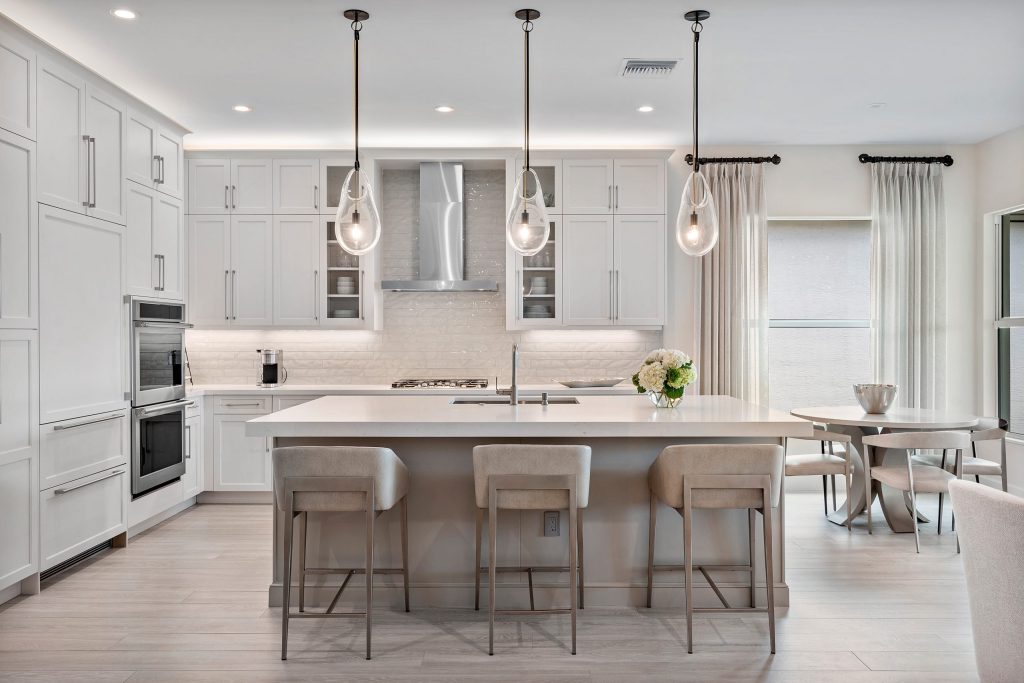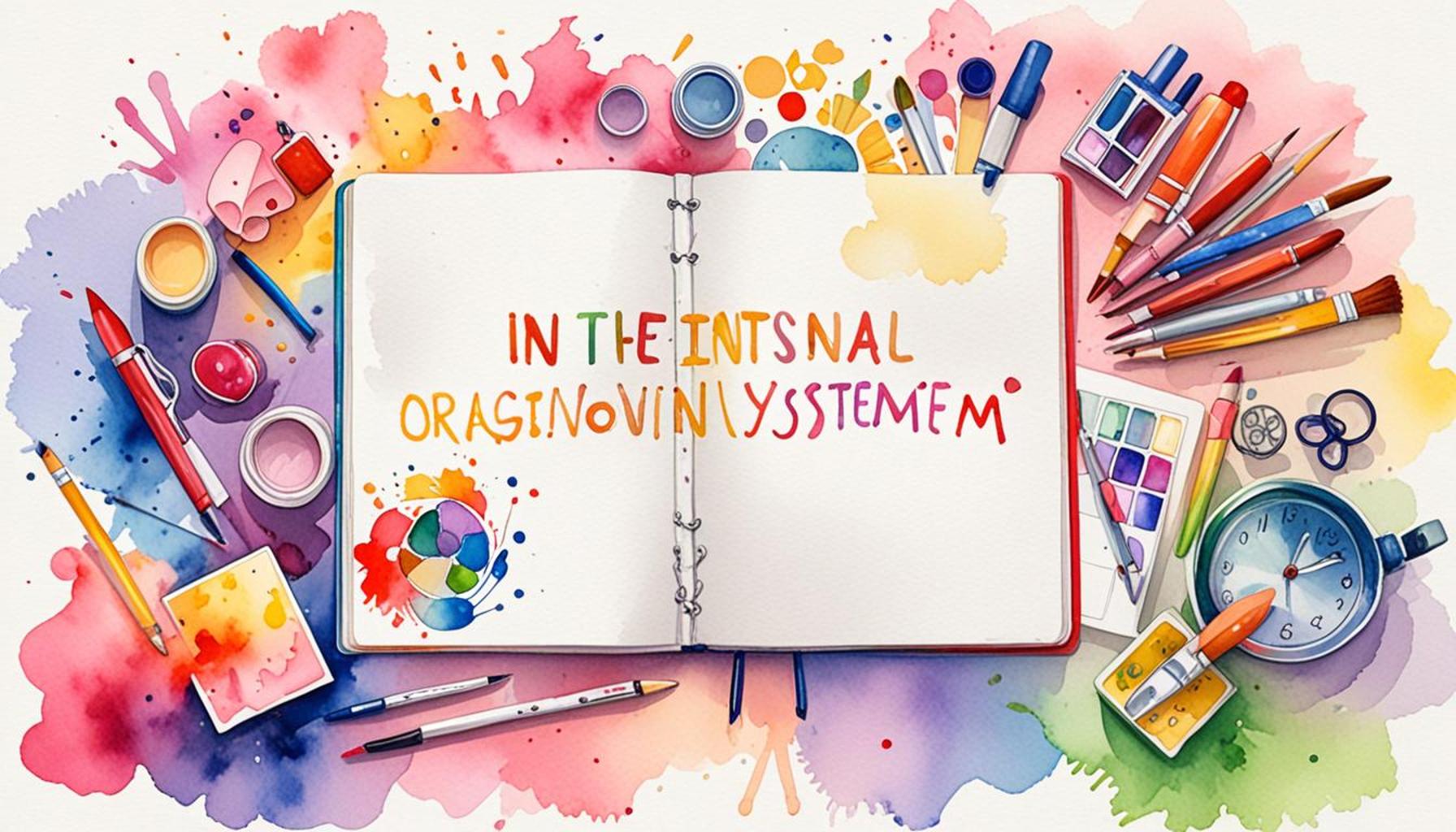The Role of Lighting in Intentional Design: Creating Minimalist Environments that Inspire

The Multifaceted Role of Lighting in Design
Lighting is an often-overlooked element in design, yet it holds the power to dramatically alter the perception and experience of a space. In minimalist environments, where simplicity reigns, the intentional use of light can greatly enhance both the aesthetic appeal and emotional resonance of a room. By selecting strategic placements and types of lighting, designers can foster atmospheres that not only invite tranquility but also inspire creativity and clarity.
Natural Light
One of the most significant aspects of lighting in intentional design is the use of natural light. Maximizing the presence of sunlight in a space can create a seamless connection with the outdoors, promoting an openness that is both invigorating and calming. Architectural elements like large windows, skylights, and glass doors are excellent means of introducing natural light. For instance, a living room with floor-to-ceiling windows can appear larger and more inviting, capitalizing on the day’s shifting light patterns. Moreover, studies have shown that exposure to natural light can improve mood and productivity, making it a key consideration in spaces designed for living or working.
Layered Lighting
Another vital consideration is layered lighting. This approach involves combining different types of lighting—ambient, task, and accent—to create a rich and versatile environment. Ambient lighting provides the overall illumination that fills the room, while task lighting focuses on particular activities, such as reading or cooking. Accent lighting is used to highlight architectural features or art pieces. For example, a kitchen can have recessed ceiling lights for general use, pendant lights over the island for tasks, and spotlights aimed at decorative tiles or wall art for visual interest. This triadic approach not only enhances functionality but also adds depth and character to minimalist spaces, making them feel more inviting.
Color Temperature
The color temperature of the light also plays a critical role in setting the mood. Warmer light tones, typically between 2700K to 3000K, can foster a sense of warmth and comfort, perfect for living rooms and bedrooms, where relaxation is paramount. On the contrary, cooler tones, ranging from 4000K to 5000K, can stimulate focus and creativity, making them suitable for offices or study areas. Consider a workspace designed with cool, bright lights that enhance alertness juxtaposed with softer, warmer lights in a cozy reading nook nearby. This thoughtful juxtaposition can create a more dynamic and adaptable environment.
In the broader context of minimalistic design, lighting transcends mere functionality. It augments the interplay of light and shadow, accentuating textures, defining spatial boundaries, and drawing attention to vital features of a room. As we delve deeper into the role of lighting in intentional design, it is clear that its thoughtful application is fundamental to creating spaces that are not only visually appealing but also elevating to the human spirit. The impact of well-designed lighting encourages us to explore our environments in new ways, fostering creativity, relaxation, and a profound sense of well-being.

DISCOVER MORE: Click here for insights
Illuminating Intentionality: The Essentials of Lighting Design
The role of lighting in intentional design cannot be overstated; it is a vital tool in shaping minimalist environments that inspire and rejuvenate. This subtle yet powerful element has the ability to influence emotions, enhance spatial awareness, and even alter perceptions of form and function within a space. In essence, how we illuminate our surroundings is an artistic decision that can transform a simple area into a sanctuary of serenity and creativity.
Strategic Light Placement
When considering lighting in intentional design, strategic placement is paramount. Lighting fixtures should be thoughtfully positioned to complement the overall spatial layout while addressing specific needs. For instance, placing lights at various heights—such as wall sconces, floor lamps, and pendant lights—can create a dynamic visual hierarchy that guides occupants intuitively around the space. Moreover, focal points such as artwork, plants, or architectural details can be enhanced through careful placement of accent lighting, drawing the eye and enriching the minimalist aesthetic.
Intentional Use of Shadows
In minimalist design, shadows play an equally important role as light. The interplay between light and shadow can create an atmosphere that feels both inviting and sophisticated. By employing techniques such as backlighting or strategically placed fixtures that cast interesting silhouettes, designers can introduce depth and dimension to otherwise plain surfaces. For example, a simple white wall can become a canvas for shadows, adding layers of visual intrigue without cluttering the space with extraneous elements. This transformative effect encourages reflection and introspection, aligning with the core principles of minimalist environments.
Smart Lighting Solutions
Embracing the evolution of technology, smart lighting solutions are becoming increasingly relevant in intentional design. With the rise of smart home devices, lighting can now be adjusted with the touch of a button or a voice command. This dynamic capability allows users to modify brightness and color temperature based on mood or time of day. Whether it’s creating an invigorating workspace in the morning or setting a cozy ambiance for a gathering in the evening, smart lighting can adapt to meet diverse needs. For instance, in a home office, flicking a switch can transform harsh overhead lighting into a calm, warm glow, promoting productivity and mental clarity.
Key Considerations for Effective Lighting
To fully harness the power of lighting in enhancing minimalist environments, consider the following critical factors:
- Function: Ensure lighting choices align with the intended use of each space to maximize utility.
- Aesthetics: Select fixtures that complement minimalist principles—think simple, sleek designs that blend seamlessly into the surroundings.
- Flexibility: Choose adjustable or multi-functional lighting options that can meet various moods and activities.
- Sustainability: Opt for energy-efficient lighting solutions to foster an eco-friendly environment that resonates with modern design practices.
By integrating these elements, designers can create more than just visually pleasing minimalist environments; they can craft immersive experiences that evoke positive emotions while nurturing creativity, focus, and tranquility. Emphasizing thoughtful lighting choices, the intentional design becomes not just an artistic expression, but a thoughtful approach to enhancing the human experience in everyday spaces. The journey into the multifaceted role of lighting continues, leading us to discover further dimensions of creating environments that truly inspire.
The Impact of Natural Light on Minimalist Design
Natural light plays a crucial role in intentional design, particularly in the creation of minimalist environments. By maximizing the use of windows and open spaces, designers can enhance the natural illumination within a room, making it feel larger and more inviting. This not only reduces the need for excessive artificial lighting but also connects the occupants with the outside world, fostering a sense of tranquility and harmony. Sunlight can help accentuate the clean lines and simplicity intrinsic to minimalism, bringing attention to thoughtfully chosen furniture and decor.Moreover, the position of windows is vital. East-facing windows capture the morning light, while west-facing counterparts provide warm, golden hues at sunset. This variation can evoke different moods throughout the day, subtly influencing the emotional atmosphere of a space. For individuals working or living in such environments, exposure to daylight can enhance productivity, elevate mood, and contribute to overall well-being.
Layering Light in Minimalist Spaces
In intentional design, layering various sources of light is essential in crafting a balanced and dynamic environment. By combining ambient, task, and accent lighting, designers create spaces that are not just functional but also aesthetically pleasing. Ambient lighting sets the overall tone, while task lighting focuses on specific areas, such as desks or reading nooks. Accent lighting, on the other hand, highlights artwork or architectural features, adding depth to an otherwise simple design.The carefully curated use of light can transform minimalist environments from stark and bland to warm and inviting. For instance, contemporary pendant lights or sleek floor lamps can serve as functional art pieces, drawing the eyes while also serving a purpose. In this way, lighting becomes an integral part of the design narrative, shaping experiences and interactions within the space.Ultimately, the role of lighting extends beyond mere illumination. It acts as a transformative element, contributing to the intentional character of minimalist design. By embracing the power of light, designers unlock the potential to inspire, elevate, and connect people to their environments in profound ways.
DISCOVER MORE: Click here to simplify your space and mind
The Cultural Impact of Lighting on Minimalist Spaces
Beyond mere aesthetics, lighting holds the key to shaping the cultural experiences within minimalist environments. As communities increasingly embrace the notion of intentional design, understanding cultural contexts and their relationship with light becomes essential. Different cultures respond uniquely to lighting, which can influence not only a space’s atmosphere but also its sociocultural significance. For example, in Scandinavian interior design—a prominent style characterized by its minimalism—natural light is revered. Large windows and light color palettes create openness, allowing occupants to feel connected with their environment. This emphasis on light details how lighting can strengthen local identities and foster a sense of place.
The Emotional Spectrum of Light
The emotional spectrum evoked by different lighting techniques cannot be overlooked. Research shows that color temperature—the warmth or coolness of light—affects mood and productivity. Cooler, bluish light is often linked to enhanced focus and cognitive function, making it ideal for workspaces. Meanwhile, warmer tones foster a sense of comfort and relaxation, perfect for intimate settings or residences. Designers today leverage this understanding to create environments that evoke specific emotional responses through deliberate light selection. A well-placed warm light in a reading nook invites relaxation, while bright, cool LED lights in a kitchen can invigorate cooking activities.
Natural Light: The Ultimate Minimalist Element
In the pursuit of minimalist design, natural light is the pinnacle element that elevates spaces to new heights. Daylight serves not only to illuminate but to connect the indoors with the outdoors, dissolving barriers and inviting tranquility. Incorporating elements such as skylights, large glass doors, and strategically positioned windows encourages daylight to permeate the space, transforming it throughout the day. This shift in light can create a living artwork; for instance, as the sun sets, shadows stretch and change, allowing occupants to experience the passing of time in a visually engaging way. The integration of natural light promotes sustainability and can significantly reduce energy needs, aligning with modern minimalist principles.
Layering Light for Depth and Functionality
To maximize the effectiveness of lighting in minimalist design, layering light is a vital technique. Rather than relying on a single source, combining ambient, task, and accent lighting provides versatility and enhances functionality. Ambient lighting sets the overall mood while task lighting focuses on specific areas, such as illuminating a workspace or kitchen counter. Accent lighting enhances design features, drawing attention to artwork or architectural details. This technique creates a holistic lighting experience that mirrors the complexity of life within minimalist spaces, allowing them to transform fluidly without the need for clutter.
Exploring Advanced Technologies in Lighting Design
Furthermore, the advent of advanced lighting technologies such as tunable white LEDs and OLED panels has opened new possibilities in intentional design. These technologies enable designers to manipulate light settings dynamically, creating customizable atmospheres that align with changing needs. In a workspace, for instance, one could optimize light levels to reduce eye strain or improve focus during demanding tasks. In residential settings, the ability to shift light from cooler to warmer tones throughout the day mirrors the natural progression of sunlight, reinforcing a connection to the natural world.
As we explore the intricate relationship between lighting and intentional design, the possibilities for inspiring minimalist environments are limitless. By understanding the cultural, emotional, and technological dimensions of lighting, we can unlock the full potential of our spaces, crafting experiences that resonate deeply with the human spirit.
DISCOVER MORE: Click here to learn how intentional design boosts your productivity
Conclusion: Illuminating Minimalist Design
In conclusion, the role of lighting in intentional design transcends mere functionality; it is a powerful catalyst for shaping the mood, identity, and experience of minimalist environments. By emphasizing natural light, employing advanced technologies, and strategically layering various sources of illumination, designers can create spaces that do more than serve a purpose—they inspire. The interplay of light transforms the experience within these environments, enhancing both emotional well-being and productivity.
Furthermore, understanding the cultural context around lighting allows for a more nuanced approach to design, where local identities are celebrated, and personal connections to space are fostered. The energy and ambiance imparted by carefully considered lighting not only transforms physical spaces but also encourages deeper human interactions within them. In a world where the clutter of modern life often overwhelms, minimalist environments paired with intentional lighting offer a refuge, inviting occupants to slow down, reflect, and appreciate the beauty in simplicity.
As we continue to navigate sustainability and innovation, exploring how the emotional spectrum of light impacts our daily lives will ensure we forge ahead into environments that are both functional and evocative. The challenge for designers lies in mastering this delicate balance, crafting experiences that resonate on multiple levels while inspiring us to continually engage with our surroundings. Embrace the luminous possibilities of intentional design, and let light shape the world around you in ways that awaken creativity and connection.


